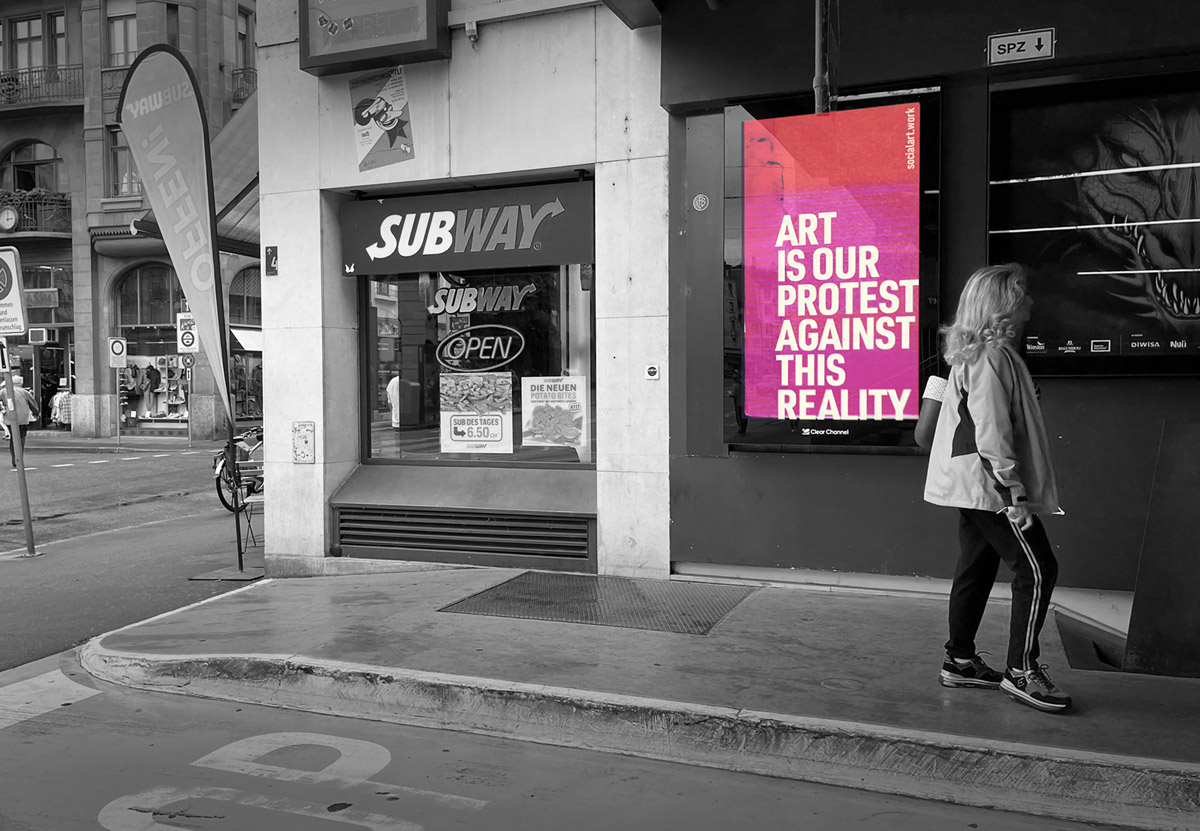We use the cookies _ga, _gat, _gid to collect anonymous data about how you use this site. OK.
Tristan Tzara first uttered this word ... in the Café de la Terasse in Zurich.
JEAN (HANS) ARP (1886-1966)
Firrell's
Dada 105
marked 105 years since the first publication of
Dada
- the Zurich Dada-ists’ historic review of art and literature.
In all, poet and Dada leading light, Tristan Tzara (1896 – 1963), published 4 Dada magazines from the city of Zurich (numbers 1, 2, 3 and 4/5, an anthology) before moving to Paris.
During the First World War, many artists and intellectuals fled to Zurich where, in neutral Switzerland, they were able to continue to make art. As a consequence, Zurich became the epicentre of European avant-garde experimentation.
Dada 105
is a series of 4 digital posters created for the cities of Zurich and Basel. The artworks magnify flaws like tears, uneven inking and foxing in the fabric of the original Dada pamphlets. A fault in a digital printer at the artist’s studio produced further unexpected colour effects which the artist liked and retained.
The texts re-state aspects of Dada philosophy pertinent to contemporary times. Restatement of this kind is one of Firrell’s favourite artistic strategies.
The artist also experimented with the sentiment ‘all art is failure’ drawn from a conversation with philosopher A C Grayling (b. 1949). Grayling reasons that any artwork, when realised, can never live up to the original conception in the artist’s mind and so the realised work is always imperfect, always a failure.
Dadaists regarded the whole of Western art as a failure because, for all its high-mindedness and nobility, it was still an inherent part of the bourgeois logic that had led to the mass slaughter of the First World War.
Where Firrell refers to ‘this reality’, it must also point to the Russian invasion of Ukraine. Once again war has come to Europe and art is morally required to protest against all and any conditions that lead to war.
Unusually for Firrell, the artwork of
Art Is Our Protest Against this Reality
is a digital scan of an inkjet print. The print was produced in the studio on a printer with failing cartridges. As the red ink ran low, the original orange ground turned pink in an effect that appealed to the artist.



